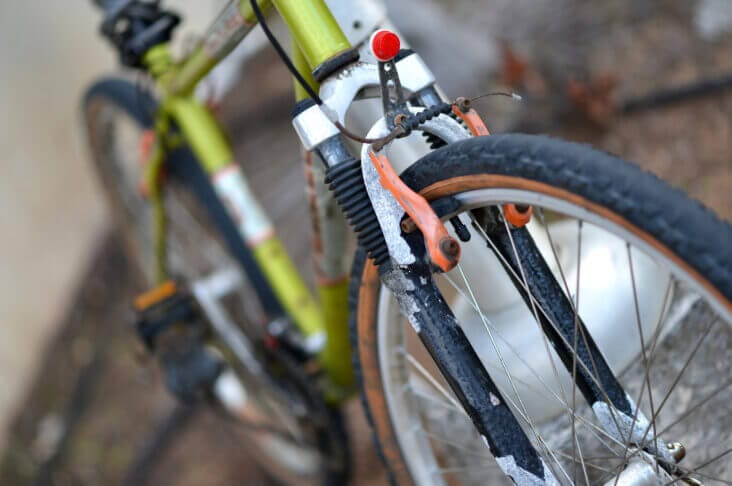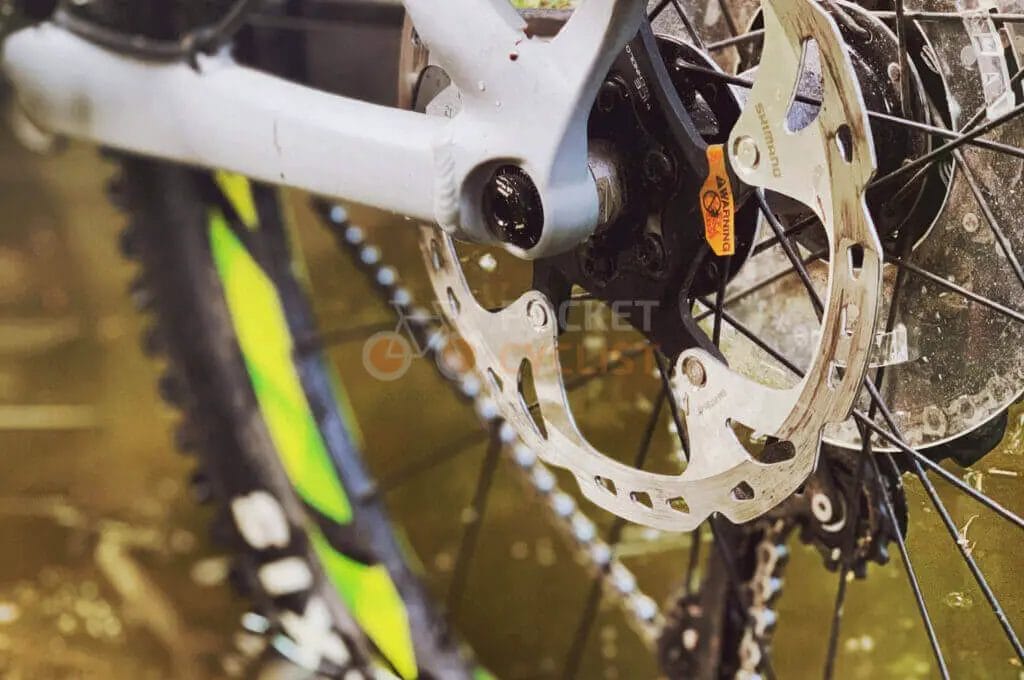Last Updated on July 14, 2024 by Vinson Lozano

Introduction to Bicycle Brake Pads
Introduction to Different Types of Bicycle Brake Pads
When it comes to ensuring a smooth and safe bike ride, understanding the various types of bicycle brake pads is essential. There are several types of brake pads, each designed to cater to specific biking needs and environments.
1. Rim Brake Pads:
- Found in traditional bicycles.
- Cantilever and V-brake pads: Commonly used in mountain bikes and some road bikes.
2. Disc Brake Pads:
- Popular in modern bicycles.
- Organic (Resin) Pads: Made from a mixture of fibers and bonding agents.
- Sintered (Metal) Pads: Made from metallic particles fused together under heat and pressure.
- Semi-metallic Pads: A blend of organic and metallic components.
Each type offers distinct advantages and drawbacks, which we’ll explore further. Choosing the right brake pad type can significantly impact your biking experience and safety.
Understanding the Importance of Quality Brake Pads for Safety
Having covered the different types of bicycle brake pads, let’s dive into why investing in quality brake pads is crucial for your safety.
1. Reliable Stopping Power:
- High-quality brake pads ensure consistent braking performance, crucial for emergency stops.
- They prevent skidding and sliding, giving you better control over your bike.
2. Durability:
- Superior brake pads last longer, reducing the frequency of replacements.
- They perform well under various conditions, from wet trails to dry roads.
3. Noise Reduction:
- Quality pads are engineered to minimize noise and vibration.
- This results in a smoother, quieter ride.
Using top-notch brake pads enhances both safety and comfort. Remember, when it comes to biking, the importance of dependable braking cannot be overstated.
Organic vs. Sintered Brake Pads

Benefits and Drawbacks of Organic Brake Pads
Now that we understand the importance of quality brake pads for safety, let’s examine the benefits and drawbacks of organic brake pads, a common choice among cyclists.
Benefits of Organic Brake Pads:
- Quieter Operation: They produce less noise compared to metallic options.
- Better Modulation: Offers smoother and more controlled braking.
- Environmentally Friendly: Made from eco-friendly materials like fibers and resins.
Drawbacks of Organic Brake Pads:
- Shorter Lifespan: They wear out faster, especially in wet conditions.
- Heat Sensitivity: Less effective in extreme heat, leading to brake fade.
- Lower Durability: Not ideal for heavy or aggressive biking.
Organic brake pads excel in providing a quieter and smoother ride, but their lifespan and heat sensitivity are essential considerations.
Advantages and Disadvantages of Sintered Brake Pads
Following our discussion on organic brake pads, it’s essential to also consider sintered brake pads, known for their robustness and durability.
Advantages of Sintered Brake Pads:
- Superior Durability: Made from fused metallic particles, they last longer and withstand heavy use.
- Excellent Performance in Wet Conditions: Reliable even when it’s rainy or muddy.
- Heat Resistance: Efficient under extreme heat, preventing brake fade.
Disadvantages of Sintered Brake Pads:
- Noisier Operation: They tend to be louder, especially under heavy braking.
- Increased Rotor Wear: Can wear down rotors faster due to their harder material.
- Higher Cost: Generally more expensive than organic pads.
Sintered brake pads offer unmatched durability and performance in various conditions, making them ideal for aggressive and heavy riders. However, their noise level and higher cost are points to consider.
Top Bicycle Brake Pads Brands
Overview of the Best Bicycle Brake Pads Brands in the Market
After exploring the types and pros and cons of brake pads, it’s time to identify the best bicycle brake pads brands that consistently deliver quality and performance.
1. Shimano:
- Renowned for reliability and innovation.
- Offers a wide range of brake pads suitable for both casual riders and professionals.
2. SRAM:
- Known for high-performance brake systems.
- Provides organic and sintered options, excellent for mountain biking.
3. Kool-Stop:
- Specializes in aftermarket brake pads.
- Organic compounds designed for quieter, smoother braking.
4. SwissStop:
- Praised for premium materials and precision engineering.
- Offers pads for diverse biking conditions and styles.
These brands are industry leaders, offering top-notch brake pads tailored to various needs and conditions. Opting for products from these manufacturers ensures reliable braking performance and safety.
Comparison of Popular Brake Pad Options from Leading Manufacturers
Building on our overview of top brake pad brands, let’s compare some popular options from these leading manufacturers.
1. Shimano B01S (Organic):
- Quiet and Smooth: Ideal for city commuting.
- Moderate Wear Rate: Suitable for casual to moderate biking.
2. SRAM Guide/Trail (Sintered):
- Durable and Heat-Resistant: Perfect for aggressive mountain biking.
- Higher Noise: Louder than organic pads but excellent in wet conditions.
3. Kool-Stop Dual Compound:
- Enhanced Modulation: Offers excellent control and braking power.
- Eco-friendly: Made from organic materials.
4. SwissStop Disc 34 RS (Semi-metallic):
- Balanced Performance: Provides a mix of durability and quiet operation.
- Versatile: Works well in varying conditions.
This comparison highlights the diverse offerings from top brands, catering to different riding styles and preferences. Organizing your choice based on your specific needs will help ensure the best biking experience.
Installation and Maintenance Tips
Step-by-Step Guide for Installing Bicycle Brake Pads
Having understood the various options and their benefits, let’s go through a step-by-step guide on installing bicycle brake pads.
Tools You’ll Need:
- Allen wrench set
- Needle-nose pliers
- Caliper alignment tool (optional)
Steps:
- Remove the Wheel:
- Use an Allen wrench to loosen the nuts.
- Carefully take off the wheel to access the brakes.
- Remove Old Pads:
- Use pliers to remove the retaining pin.
- Slide the old pads out from the caliper.
- Install New Pads:
- Slide the new pads into place.
- Insert and secure the retaining pin.
- Reattach the Wheel:
- Place the wheel back on the bike.
- Tighten the nuts with the Allen wrench.
- Adjust Brake Alignment:
- Use the alignment tool to ensure pads are centered.
- Check for proper distance from the rotor/rim.
Following this guide ensures your new brake pads are installed correctly, providing optimal performance and safety on every ride.
Maintenance Tips to Ensure Optimal Brake Performance and Longevity
After installing your new brake pads, keeping them performing at their best and lasting longer requires regular maintenance.
1. Regular Inspection:
- Check Pad Wear: Inspect brake pads regularly for signs of wear.
- Measure Rotor Thickness: Ensure rotors are not too thin or warped.
2. Cleaning Routine:
- Remove Debris: Clean pads and rotors with isopropyl alcohol to remove dirt and grime.
- Avoid Contamination: Keep lubricants and oils away from brake components.
3. Adjustment and Alignment:
- Re-align Pads: Ensure pads are properly aligned with the rotor/rim.
- Adjust Tension: Fine-tune brake tension for optimal performance.
4. Proper Bedding In:
- Break-in Period: Perform several slow-speed stops to bed in new pads.
- Even Surface Contact: This helps achieve even contact and improves braking efficiency.
Consistent maintenance not only enhances braking performance but also extends the life of your brake pads. Keeping your bike’s braking system in top shape ensures a safe and enjoyable ride every time.
Performance and Durability of Brake Pads
Factors Affecting the Performance and Durability of Bicycle Brake Pads
Continuing from our maintenance tips, it’s crucial to understand the factors that affect the performance and durability of bicycle brake pads.
1. Material Composition:
- Organic Pads: Quiet but wear out quicker.
- Sintered Pads: Durable but can be noisy and rough on rotors.
- Semi-Metallic: A balance between organic and sintered options.
2. Riding Conditions:
- Wet Conditions: Accelerate wear, especially for organic pads.
- Dusty or Muddy Trails: Increase abrasion and reduce pad life.
3. Braking Habits:
- Hard Braking: Generates more heat and wears out pads faster.
- Gradual Braking: Reduces heat buildup and extends pad life.
4. Maintenance Practices:
- Proper Alignment: Ensures even wear and optimal contact.
- Regular Cleaning: Prevents contamination and buildup.
Understanding these factors helps you choose the right brake pads and adopt practices that enhance both their performance and longevity. Keeping these considerations in mind ensures you’ll get the most out of your brake pads.
Tips for Maximizing the Lifespan and Effectiveness of Brake Pads
Understanding the factors that affect brake pad performance, let’s explore some tips to maximize the lifespan and effectiveness of your brake pads.
1. Regular Cleaning:
- Debris Removal: Clean pads and rotors with isopropyl alcohol.
- Avoid Contamination: Keep brake components free from lubricants and oils.
2. Proper Bedding In:
- Bed-in Procedure: Perform several slow-speed stops to bed in new pads.
- Consistent Pressure: Ensure even pad contact with the rotor.
3. Optimal Alignment:
- Check Adjustment: Regularly inspect and align pads with the rotor/rim.
- Minimize Friction: Proper alignment reduces unnecessary wear.
4. Adapt Your Braking Style:
- Avoid Hard Braking: Use gradual braking to minimize heat buildup.
- Feathering Technique: Light, consistent pressure can extend pad life.
5. Regular Inspection:
- Monitor Wear: Regularly check pad thickness and rotor condition.
- Early Replacement: Replace pads before they are fully worn out.
Implementing these practices ensures that your brake pads not only perform optimally but also have an extended lifespan, providing consistent and reliable braking power on every ride.
Conclusion and Recommendations
Summary of Key Points in Choosing the Best Bicycle Brake Pads
As we wrap up our discussion on maximizing brake pad lifespan, let’s summarize the key points to consider when choosing the best bicycle brake pads.
1. Understand Pad Types:
- Organic Pads: Quiet and smooth, ideal for city commuting.
- Sintered Pads: Durable and heat-resistant, perfect for aggressive riding.
2. Assess Riding Conditions:
- Wet or Muddy Conditions: Sintered pads perform better.
- Dry and Dusty Trails: Organic pads can be a good choice.
3. Factor in Braking Habits:
- Frequent Hard Stops: Opt for sintered pads.
- Smooth, Gradual Braking: Organic pads may suffice.
4. Brand and Quality:
- Choose reputable brands like Shimano or SRAM for reliability.
5. Ease of Maintenance:
- Consider pads that are easy to install and maintain.
By keeping these considerations in mind, you can select brake pads that best match your riding style and conditions, ensuring superior performance and safety. This preparation sets you up for confident and enjoyable rides.
Recommendations for Top-Performing Brake Pad Options Based on Riding Preferences and Conditions
Transitioning from our guide on selecting brake pads, let’s look at specific recommendations for top-performing brake pads based on riding preferences and conditions.
1. Casual City Riding:
- Shimano B01S (Organic):
- Quiet and Smooth: Perfect for daily commutes.
- Environmentally Friendly: Made from organic materials.
2. Mountain Biking:
- SRAM Guide/Trail (Sintered):
- High Durability: Ideal for rugged terrain.
- Heat Resistance: Performs well under extreme conditions.
3. Wet and Muddy Conditions:
- SwissStop Disc 34 RS (Semi-metallic):
- Excellent Performance in Wet Conditions: Ensures reliable braking.
- Balanced Durability: Offers a blend of organic and metallic benefits.
4. Mixed Terrain:
- Kool-Stop Dual Compound:
- Versatile Use: Great for varying conditions.
- Enhanced Modulation: Provides better control and braking power.
By matching your brake pads to your specific riding style and conditions, you ensure optimal performance and safety. Each of these recommendations addresses distinct needs, helping you make the best choice for your biking adventures.


